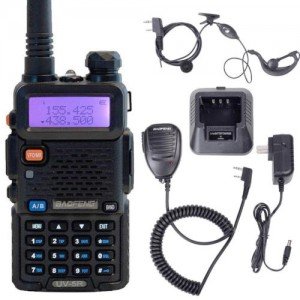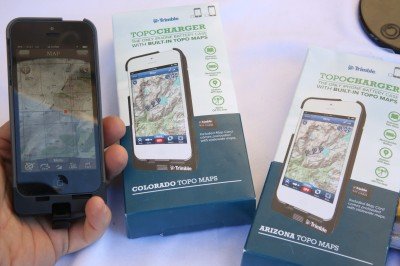About the scariest thing I can think of is to lose contact with my children in a world over the brink of collapse. Most young people don’t even have a land based phone line these days, so if the cell networks go down, that’s it. But there is a way, if you do it now, to establish a communications protocol with loved ones who are hundreds, or even thousands of miles away. As I’ve discussed a few times before in this column, the Amateur radio bands, otherwise known as the Ham bands, under 30 megahertz, are capable of reaching around the entire globe at certain times of the day. Full access Ham radios, covering several bands, or even all the Ham bands, sell for $300 to $10,000, but I found some small radios that cover only one frequency for as little as under $10. You have to still buy an antenna, but the overall cost could be as little as $50. As a bare bones mode of communication on a very tight budget I don’t think you can beat these little radios.
Search: solar generator
Show First
Prepping 101: Go to the Movies This Week!
If you are a regular reader of this column you know that my subjects here of late have been extremely thick, and expensive. I try to be aware of just how much I am loading on, so I decided that this week is a good time to devolve into a bit of prepping theory again. I went to two movies this week, The Martian, and Maze Runner: The Scorch Trials. Between the two, it was as if Hollywood put on a clinic for what survival post-collapse is all about.
Prepping 101: TEN BUCKS – Worldwide All Band Radio Scanner
How important are survival communications? From a prepping budget perspective, I’ve asked that question a lot. And unfortunately, as with many subjects I’ve covered, there is a ton of misinformation out there about the subject. When you buy a “survival radio,” like the ones with the little solar panel and hand crank, you are buying a multi-band receiver, and you’ll pay more depending on how many bands you want. A basic radio, some even under $20, will be AM/FM, and most of them also have the NOAA weather channel, which is 162.4 mhz. Pay a little more and you may get some of the Ham radio bands, but you will seldom hear any traffic on those bands, because the included whip antenna is not made for those frequencies. Police, fire, airplane, and a hots of other frequencies that would be nice to monitor in a survival situation are not in those radios. Getting all of those frequencies, until now, has been very expensive. This article is about a newer type of radio called “Software Defined Radio,” or SDR-RTL, and it changes everything.
Prepping 101: Free and Cheap Survival Publications – 1st Live, Then Rebuild!
I like to ask myself regularly, what do I take for granted? Because when I asked myself that three years ago, the answer was “everything.” These days I don’t take for granted that there will be food in the supermarket, electricity to pump water out of my well (or from city waterpumps), or that there will be any 911 to call should I need help…with anything. But one of my last pillars to fall was the fact that I really thought that I had enough knowledge, and what I didn’t know I could easily put my hand on, because of the internet. But the more I have thought about how much I rely on the internet, the more I have realized that it is time to downloading information about things I needs. The problem is, re-finding it all and downloading it is time consuming, so I decided to start buying CD and DVD compendiums on things I might need.
Prepping 101: Rechargeable Batteries – Where There’s Smoke…
First off, I wouldn’t expect many people to click on this article because who the heck doesn’t know what a rechargeable battery is. So for that reason I added to the title “Where There’s Smoke…,” implying that there is fire somewhere. I am not referring to literal fire, though some rechargeables have been known to cause them. What I mean by that is where you see a name brand on a rechargeable battery, be careful to not pay too much for the name, instead of getting the most milliamps-hours for your buck.
Prepping 101: Radio Communications – When TV, Radio & Internet Go Dark
As you probably have surmised by now, this column is really about taking a global collapse seriously. Radio communication is one subject that I find taken for granted in most of the internet press and supermarket survival magazines, but if you don’t understand the basics of what radios can be used for what types of communications, and go out and actually buy them, you will truly leave yourself in the dark when all of the standard communications go down.
Prepping 101: Network Free GPS Topo Maps for Android, IPad, IPhone
I have been sitting on a story since Media Day at the Range back in January on the day before the 2014 SHOT Show. It is a very simple GPS driven topography map interface for smartphones and tablets. Who doesn’t have one of those these days right? But outside of a very small percentage of hunters that hunt public lands with topo maps, I didn’t think many people would be interested in our gun world. One detail about these cards, though, makes them extremely relevant for long term survival. They don’t require a network connection to use the GPS or the data. Once you download the app, all you need is the micro-SD card with the data. At $69.99 without private land data and $99.99 with that data, these are a really cheap way to keep right at your fingertips a complete set of topo maps for your entire state. Right now the cards are available for all Android devices and the Ipad, and we were able to fondle the first generation of IPhone charger cases at SHOT Show, though they have yet to be released.
Prepping 101: Water Storage, Purification, Filtration & Winter
Water is the most crucial and diverse aspect of preparing for the breakdown of our society. Where do you get your water now? Is it from the city? Is it from an artesian well? A shallow well? Do you have lakes or streams near your house? Are those your sense of water security? Is your swimming pool an ever-available water backup? All of these pieces mesh into a fairly large body of possibilities, and points of failure. Those points of failure are what we most need to talk about. Once you understand the issues, and the types of methods to resolve them, water gets much simpler. The bad news is that if you live in a tightly packed area, or an apartment, you may have to make a decision now that eventually abandoning your home is mandatory (but not right away). Depending on where you live, your water issues may be complete scarcity, pollution, feast or famine seasonal rain and droughts, deep freezes and even deadly bacteria and viruses in the water. There are ways you can prepare for all of these potential problems, for both the short and long term.








